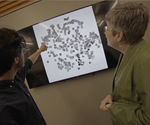Video: 3 Roles for Computer Vision in Metal 3D Printing
Carnegie Mellon University professor Elizabeth Holm explains three ways computer vision can advance powder-bed metal 3D printing.
In additive manufacturing, the microstructure of a part is critical to that part’s properties, performance and quality. The better microstructure can be understood and controlled, the more repeatable the AM process becomes. Research currently underway at Carnegie Mellon University (CMU) is exploring how computer vision—the use of computational algorithms to sense visual information—could be applied to advance understanding of microstructures in powder-bed metal 3D printing.
In the video below, Elizabeth Holm, professor of materials science and engineering at CMU, shares three applications for computer vision in AM materials, process control and quality control. Learn more about Holm’s research in applying computer vision and machine learning to metal powders.
Related Content
-
VulcanForms Is Forging a New Model for Large-Scale Production (and It's More Than 3D Printing)
The MIT spinout leverages proprietary high-power laser powder bed fusion alongside machining in the context of digitized, cost-effective and “maniacally focused” production.
-
Possibilities From Electroplating 3D Printed Plastic Parts
Adding layers of nickel or copper to 3D printed polymer can impart desired properties such as electrical conductivity, EMI shielding, abrasion resistance and improved strength — approaching and even exceeding 3D printed metal, according to RePliForm.
-
DMG MORI: Build Plate “Pucks” Cut Postprocessing Time by 80%
For spinal implants and other small 3D printed parts made through laser powder bed fusion, separate clampable units resting within the build plate provide for easy transfer to a CNC lathe.

.jpg;width=70;height=70;mode=crop)









